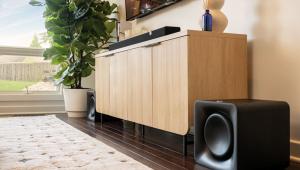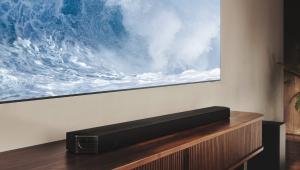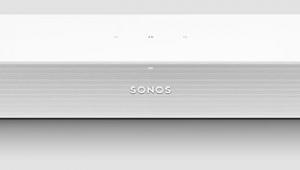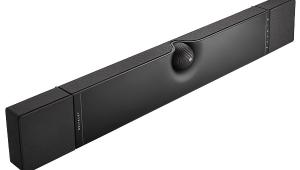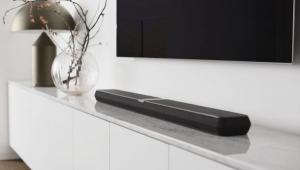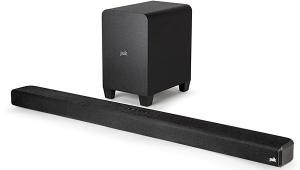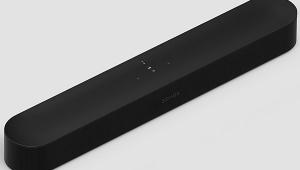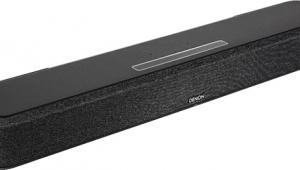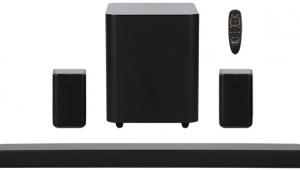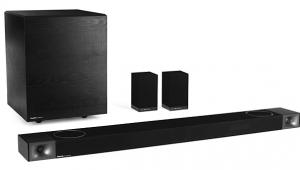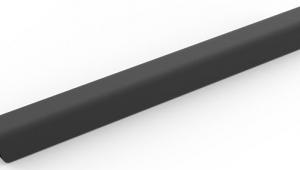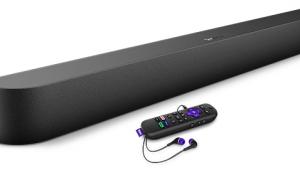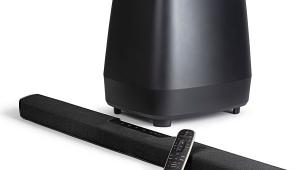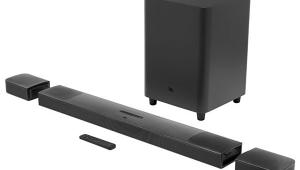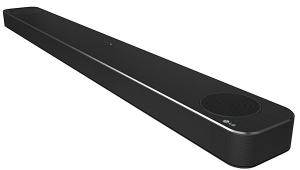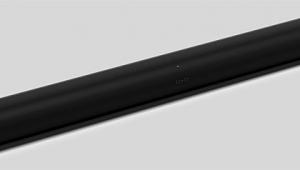Test Report: Yamaha YSP-2200 Digital Sound Projector
I have something that I must confess: I’ve got a love/hate thing with soundbars. On the love side, these one- or two-piece, flat-panel-pandering “surround” systems have rescued tens of thousands of innocent suburbanites from the horrors of tinny TV tintinnabulation.
On the hate side, when compared with any reasonably competent “real” surround speaker system that includes separate center, surround, and subwoofer components, soundbars suck. Some suck more, some less, but suck they all do: The physical-acoustics laws laid down by God (or Helmholtz or Newton) are not suspended especially for soundbars.
Or are they? Under the influence of Yamaha’s “digital sound projector” technology, my faith in these immutable laws has been deeply shaken.
Setup
The guilty party here is Yamaha’s YSP-2200 Digital Sound Projector, a superbly compact soundbar barely 2 inches tall — 4 inches if you include the adjustable feet. A briefcase-size subwoofer houses two 4-inch drivers. Tellingly, Yamaha’s provided hookup wire is just 4 feet long: The company really doesn’t want you locating the sub off in a corner, since the soundbar crosses over to it at quite a high frequency. (Bass much above 100 Hz — roughly an octave below middle C — becomes too easy to localize by ear, so if you put a “subwoofer” like this under the sofa, you’ll hear Darth Vader coming from under the sofa.)
I placed the YSP-2200 itself on my TV stand just in front of my 55-inch Samsung set, where its low height made sight-line clearance a non-issue. (Yamaha thoughtfully includes an IR flasher for installs where the soundbar blocks the TV’s sensor.) After initial trials, I placed thick rubber stick-on feet (from my cigar box containing hundreds) to induce a substantial uptilt, more on which follows. The sub went just below: Yamaha provides little clip-on plastic feet for either vertical or horizontal placement. After trials I settled on vertical, again with considerable uptilt to direct the sub’s substantial low-midrange content more toward the listening position.
The YSP-2200 is the latest in an evolving family of ever more affordable, ever more compact Yamaha Digital Sound Projectors. The design of these soundbars exploits the fact that if you bunch many small speakers close together into a wide “array,” you’ll get sound that, while far from smooth in frequency response (due to interference effects among the drivers), spreads very nicely in the “wide” dimension and tightly in the vertical. Better still, if you give each driver individual digital signal processing and amplification, you can do surprising things. You can largely correct the response (by delaying adjacent drivers/groups very slightly), and you can “steer” the output of individual subsets of drivers to an amazing degree. Create four or five such subsets (which Yamaha rightly dubs “beams”) and, given walls from which to reflect, you have the makings of actual — as opposed to in-head-realized “virtual” — surround sound.
My room has book/disc cases along both walls — by design, since large reflective surfaces close to the speakers are exactly what you don’t want for conventional loudspeaker setups, and bookcases make for reasonably effective diffusers. So I worried about how well the YSP-2200, depending as it does on deliberate first reflections, could possibly work.
- Log in or register to post comments
